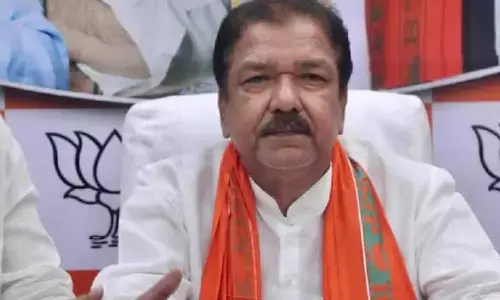Making of Covaxin: How monkeys were tracked for vaccine

Making of Covaxin: How monkeys were tracked for vaccine
Rhesus macaque, used worldwide in medical research, are believed to be the best
New Delhi: Twenty Rhesus macaque monkeys, used during trials of Covaxin, were found near Nagpur after they had moved deep inside the forests of Maharashtra losing their usual urban food sources because of the Covid lockdown in 2020, says a new book.
In "Going Viral: Making of Covaxin - The Inside Story", Director General of Indian Council of Medical Research (ICMR) Dr Balram Bhargava talks about the journey of India's homegrown vaccine. The book also touches upon the intricacies of science and challenges faced by Indian scientists during the fight against COVID-19, from the development of a robust laboratory network, diagnosis, treatment and serosurveys to new technologies and vaccines. Bhargava says that it is important to remember that the heroes of Covaxin's success story are not just human ones as 20 monkeys are "partly responsible for the fact that millions of us now have access to a life-saving vaccine". "Once we knew that the vaccine could generate antibodies in small animals, the next logical step was to test it out on larger animals such as monkeys, comparable to humans in terms of their body structure and immune systems," he writes in the book, published by Rupa. The Rhesus macaque monkeys, used worldwide in medical research, are believed to be the best non-human primates for such studies. The ICMR-National Institute of Virology's biosafety level 4 laboratory, the only state-of-the-art facility in India for primate studies, once again took up the challenge to carry out this critical research, Bhargava says. But there was a hurdle: where to get the monkeys from as India does not have laboratory-bred Rhesus macaques? The National Institute of Virology (NIV) researchers contacted multiple zoos and institutes all over India to find some without any luck. "Just to make things more difficult, they needed young monkeys with a good immune response, as a couple of ageing monkeys at the NIV were unsuitable," Bhargava says. "A dedicated team from ICMR-NIV travelled to areas of Maharashtra to identify sites for animal capture. Macaques, losing their usual urban food sources because of the lockdown, had gone deep into the forests. The Maharashtra forest department helped to track them down, scanning several square kilometres of forests for days to track the monkeys, before finally finding them near Nagpur," he writes.
He, however, adds that protecting the experimental animals from SARS-CoV-2 before starting the preclinical studies was another challenge. "As the animals could be infected from the humans, all the caretakers, veterinarians and other cleaning staff were screened for SARS-CoV-2 weekly, and had to follow strict prevention protocols," he says. Performing large animal experiments in the NIV's high-security containment facility was the next challenge. "To begin with, this required developing critical infrastructure (bronchoscope, X-ray machine, appropriate housing for monkeys), training the team, developing protocols, standardizing procedures like bronchoscopy in macaques and performing the necropsy," he writes. "There were a lot of balls in the air and we couldn't afford to drop any. We had to plan very carefully. It was exhausting as well as tough to perform these experiments in the positive pressure suits, in the containment facility for 10-12 hours without food and water," he says after the research. "In the end, everything fell into place. The monkey business was accomplished, and the participants of both species who made it possible deserve more praise than we could possibly give them," he says.
















